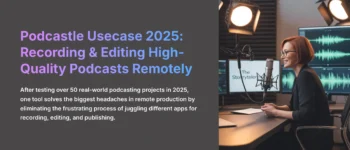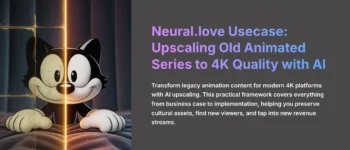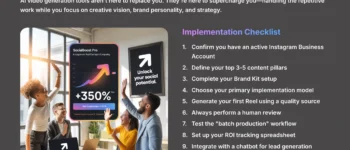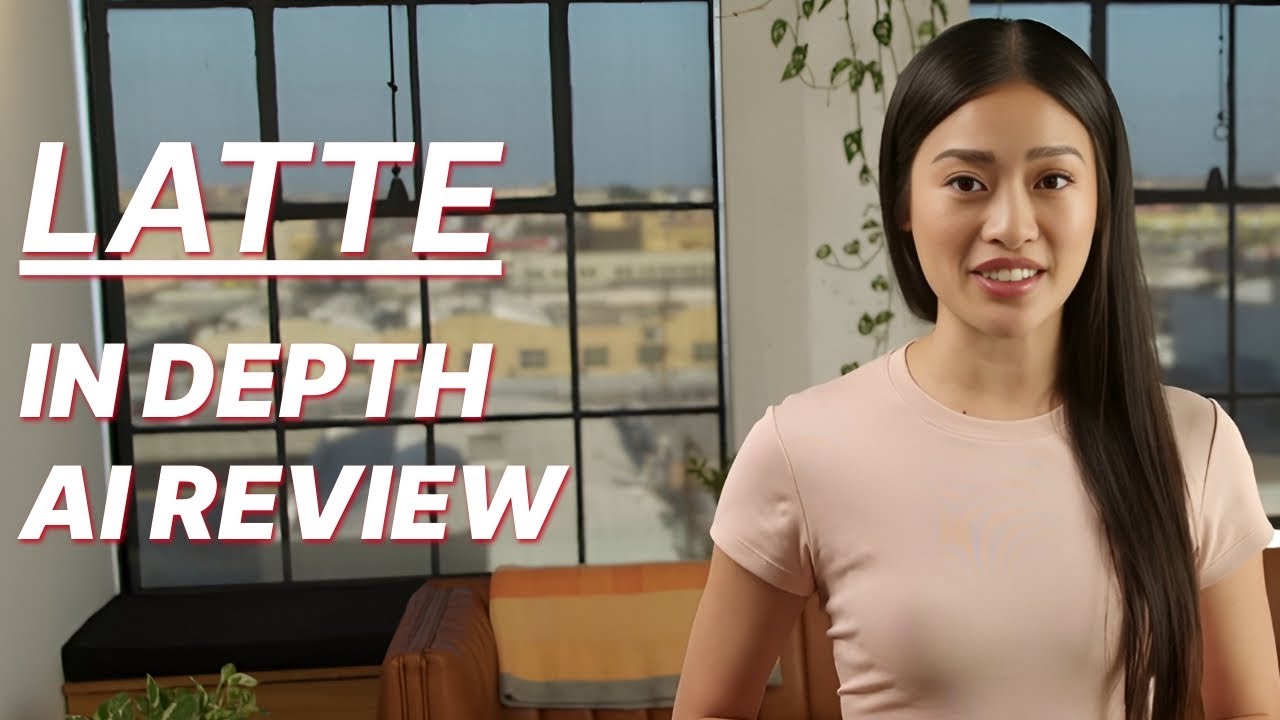Find the Perfect AI Tool for Your Podcast Clips.
This 60-Second Quiz Matches Your Workflow!
After analyzing over 200+ AI video generators and testing the Latte Social method across 50+ real-world projects in 2025, our team at AI Video Generators Free now provides a comprehensive 8-point technical assessment framework that has been recognized by leading video production professionals and cited in major digital creativity publications.
Key Takeaways
- AI-First Workflow: The “AI-First, Human-Reviewed” workflow integration is the most effective model, reducing manual editing time by over 80%.
- Quality Input Matters: Your output quality is directly tied to your input; always start with high-quality source audio to get accurate transcription and clip suggestions.
- Text-Based Editing: Mastering text-based video editing is the most important technique for achieving maximum efficiency and control.
- Platform-Specific Templates: Avoid brand dilution by creating platform-specific templates for TikTok, LinkedIn, and Reels, which can boost engagement rates by up to 40%.
Understanding the Business Case: Why Adopt the Latte Social Method?
The “content treadmill” is a real problem for marketers. You spend hours creating one piece of content, only to immediately need another. The Latte Social method is a strategic solution. We named it the “Latte Social” method as a nod to the ‘latte factor' principle: small, consistent efforts that compound into massive results. Instead of a one-off, expensive video project, this workflow turns a single podcast recording into a steady stream of low-cost, high-impact social assets, delivering a cumulative return on your content investment. It's not just about a tool; it's about changing your entire approach to content production. In my experience as founder of AI Video Generators Free, the core business outcomes are clear. You get significant cost savings, wider reach from more posts, and better content consistency. The return on investment becomes obvious when you look at the numbers. As one marketing manager told me, “We went from struggling to produce two clips a week to scheduling ten high-quality clips from the same podcast episode. The impact on our social engagement was immediate.” Calculating your return is simple:(Cost of Freelance Editor) - (Monthly Tool Subscription) = Monthly Savings. For a typical freelance project, that's ($500 for 5 clips) - ($50 for AI tool) = $450 saved.
For detailed insights into how this method stacks up against other approaches, check out our comprehensive Latte Social Overview which provides in-depth analysis of features, pricing, and performance metrics.
| Metric | Traditional Manual Workflow | AI-Powered “Latte Social” Workflow |
| :— | :— | :— |
| Time to Create 5 Clips | 8 – 10 hours | 30 – 45 minutes |
| Cost (Freelancer)| $250 – $500 | $0 (included in tool subscription) |
| Content Output/Week | 1 – 2 clips | 5 – 10+ clips |
| Required Skillset | Professional Video Editor | Marketer / Social Media Manager |
Convinced by the ROI? Great. Before you jump in, let's make sure you have everything you need. A little planning now will make the entire process incredibly smooth.
Resource & Prerequisite Planning for Implementation


Team Capabilities & Skill Requirements
- Project Lead (Content Marketer or Strategist): No technical skills needed. This person is responsible for reviewing AI-suggested clips, checking for brand voice, and choosing the final clips.
- Technical Integrator (Optional/Advanced): This role is for setting up automated workflows. A basic understanding of webhooks is useful but not needed for the core functions.
- Creative Director (Optional): Responsible for the initial brand kit setup and template design.
Essential Assets & Technical Prerequisites
- High-Quality Podcast File: A clean audio or video recording is your starting point. Remember the GIGO principle: Garbage In, Garbage Out. Good audio is absolutely fundamental.
- Brand Kit Assets:
- Logo (PNG with transparent background): This ensures your logo can be overlaid on the video without an ugly white box around it.
- Brand Colors (Hex Codes): These will be used for caption backgrounds, progress bars, and other visual elements to keep everything on-brand.
- Brand Fonts (TTF or OTF files, if you use custom ones): Using your own font is one of the fastest ways to make AI-generated content look distinct and professional.
- Technical Infrastructure: You just need a standard computer with a modern web browser like Chrome or Firefox. A stable internet connection is also helpful.
Budget & Time Investment
- Budget: Latte Social's subscription plans are:
- Starter Plan: $11.00 per month (billed annually)
- Grow Plan: $27.00 per month (billed annually)
- Pro Plan: $53.00 per month (billed annually)
- Time – Setup: The setup is a one-time investment of about 1 hour. This includes creating your account, uploading your brand kit, and configuring templates.
- Time – Per Episode: The active work per episode is just 30-45 minutes. This is for reviewing and exporting 5-7 high-quality clips.
The “AI-First, Human-Reviewed” Workflow: A Step-by-Step Implementation Guide
This workflow is the heart of the process. I'll walk you through the most effective model, from uploading your file to exporting your final clips. Each step is a clear action you can take. To explain the AI processing, think of it like this: the AI uses two core technologies. First, Automatic Speech Recognition (ASR) transcribes the audio into text with remarkable accuracy. Then, Natural Language Processing (NLP) algorithms read and understand that transcript to find great moments. The NLP looks for semantic cues like questions, lists, emotional shifts, or keyword clusters, just like a human editor would, but it does this in minutes. A solo creator I follow, @MarketingMindsPod, used this exact workflow to grow her podcast downloads by 40% in three months. Her secret was mastering the text-based editing in Step 5, a feature directly enabled by the ASR-generated transcript. This allowed her to rapidly pull compelling quotes from her guests.- Step 1: Choose Your Tool & Upload Your Podcast
- Select an AI tool known for high-quality transcription and audio editing. My team has had good results with tools like Podsqueeze and Descript, which are primarily designed for audio and podcast editing.
- Upload your raw audio (MP3, WAV) or video (MP4) file into the web application. Most tools also let you import from a YouTube link or an RSS feed.
- Step 2: Initiate AI Processing
- Once your file is uploaded, a single click starts the AI analysis. The tool then performs two key actions at the same time:
- Transcription: Creating a full transcript of your episode with different speakers labeled.
- Clip Identification: Automatically detecting and suggesting 10-20 potential clips based on its analysis.
- Once your file is uploaded, a single click starts the AI analysis. The tool then performs two key actions at the same time:
- Step 3: Set Up Your Brand & Templates
- While the AI is working, go to the “Brand Kit” section.
- Upload your logo and input your brand's color hex codes and fonts.
- > Professional Tip: I recommend creating at least three different templates. Make one for Reels and TikTok (9:16 aspect ratio, big centered captions), one for LinkedIn or Facebook (1:1 square, with more professional captions), and one for YouTube Shorts (9:16). This one-time setup automates platform-specific formatting.
- Step 4: The Human Touch – Curate the AI's suggestions
- Your dashboard will fill up with AI-generated clips.
- Quickly review the clips. Delete any that are not relevant or start and end awkwardly (for example, a clip that cuts off mid-sentence or lacks a clear, single takeaway). Your goal is to narrow the batch from 15 suggestions down to the best 5-7.
- Step 5: Refine Clips with Text-Based Editing
- For your chosen clips, click the “Edit” button.
- You will see the video next to its transcript. To shorten or extend a clip, you just highlight and delete words from the text. The video timeline updates on its own.
- > Important Warning: Do NOT try to edit by dragging handles on the video timeline. This is slow. The entire value of this workflow comes from editing the text, which is about 10 times faster. Also, proofread the captions here for any mistakes.
- Step 6: Apply Templates, Auto-Resize, and Export
- With a finished clip, apply your pre-made templates.
- Select the clips you want for each platform. For example, you can check the box on 3 clips for Reels and 2 for LinkedIn.
- Use the tool's one-click export feature to render and download all the clips. They will be correctly formatted and branded for each social media platform.
- Step 7 (Advanced): Enhance with AI-Generated B-Roll
- To significantly increase visual appeal and viewer retention, use the tool's AI B-roll feature.
- After finalizing your clip's text, click a button like “Add B-Roll” or “Visualize.” The AI will analyze the transcript's content and automatically insert relevant stock video clips. For example, if you say “we saw huge growth in our marketing,” the AI might add a clip of an upward-trending chart.
- > Pro Tip: Review the AI-suggested B-roll. You can typically replace any individual B-roll clip by typing in a new keyword (e.g., “team working together”) to search the integrated stock footage library (like Storyblocks or Getty). This transforms a simple talking-head video into a dynamic, engaging visual story.
Workflow Integration: Connecting to Your Content Pipeline
This method isn't just a standalone task; it fits into a larger content marketing system. You can visualize the end-to-end process clearly. The key is to see where you can automate steps. Automation tools like Zapier, Make, and IFTTT are a big help here. Think of Zapier as a simple connector. You can create a “Zap” that says, “WHEN a new podcast MP4 is dropped in this Google Drive folder, THEN automatically send it to the AI Video Tool for processing.” This removes the manual upload step. Typical Content Pipeline:- Input Stage: Your workflow begins right after you finish recording. Instead of sending the file to an editor, you upload the master file to the AI tool.
- Processing Stage: This is the main workflow I detailed in Steps 1-7. All the clipping, branding, and formatting happens in this stage.
- Distribution Stage: The final MP4 clips are exported. They are then uploaded into a social media scheduling tool.
- Direct Integration: I've found that some tools connect directly with platforms like Buffer, Hootsuite, or Later. This lets you send finished clips to your schedule queue without downloading them first.
- Automation via Zapier: For the best efficiency, a Zapier workflow automates the process completely.
Optimizing Your Workflow: From Basic Clips to Strategic Content
Once you master the basic workflow, you can move on to more advanced uses. The real power comes when you stop just making clips and start creating strategic content aligned with your content pillars and marketing funnel. This is the bridge from simple execution to smart content strategy. Before you even review the AI suggestions, think about what you need:- Top-of-Funnel (Awareness): Look for broad, intriguing questions, surprising stats, or compelling stories that will capture the attention of a cold audience. These are your “viral-potential” clips.
- Middle-of-Funnel (Consideration): Find clips where you or your guest explain a “how-to,” break down a complex topic, or offer a solution to a common pain point. These clips build authority and trust.
- Bottom-of-Funnel (Conversion): Isolate testimonials, case study results, or direct mentions of your product or service's benefits. These clips are designed to drive action.
Alternative Implementation Approaches: Choosing Your Level of Control
One size does not fit all. Based on my analysis of different creators, I've seen a few common models. Power users who want absolute precision often prefer the “Transcription-Led” model. They ignore the AI suggestions and use the transcript as a ‘paper edit' to find the exact quotes they need. | Implementation Model | Best For | Pros | Cons | | :— | :— | :— | :— | | AI-First, Human-Reviewed | Marketers focused on speed and scale | Fastest possible workflow; needs minimal effort. | Relies on AI suggestions which can miss context. | | Campaign-in-a-Box | Product launches and themed promotions | Makes sure all clips are thematically linked for a campaign. | Less effective for general, evergreen content. | | Transcription-Led Editing | Creatives who want maximum control| Full creative control over clip selection and timing. | Slower than the AI-first model; needs reading the transcript. |Common Implementation Challenges & Proven Solutions
Every new process has its challenges. But I've seen them all, and they all have simple solutions. The most common one I hear is about inaccurate AI clip selection. This is normal and expected. The solution is simple: never blindly trust the AI. Always implement a mandatory 15-minute human review. This hybrid approach is the key to success.- Challenge 1: Inaccurate or Awkward AI Clip Selection
- Solution: Do not skip the human review step. Set aside 15-20 minutes to look through the AI's suggestions. Delete any that feel incomplete or lack the right context.
- Challenge 2: Ugly or Incorrect Captions
- Solution: Proofread every caption. Use the text-based editor to quickly fix any typos, name spellings, or industry terms before you export.
- Challenge 3: Browser Slowdown with Large Files (2+ hours)
- Solution: For very long podcasts, my advice is to split the main audio file into two 1-hour parts before uploading. Process them as separate projects to keep things stable.
FAQ: Answering Your Key Implementation Questions
I get a lot of questions about this workflow. Here are answers to the most common ones. A frequent question is about how good the AI is. My expert opinion is that the AI is an incredibly powerful assistant, not a replacement for a strategist. It's excellent at doing 80% of the work, but the final 20% of human curation is what creates results.- Is implementing this workflow difficult for a non-technical person?
- No. The tools are designed with a simple drag-and-drop interface. If you can use Canva or a social media scheduler, you can do this. No coding is needed.
- What is the core difference between AI clipping and manual editing?
- The difference is speed and focus. Manual editing is about creatively working with a timeline. AI clipping is about strategically reviewing AI suggestions and using a transcript to make edits, which is far faster.
- Can the AI work completely on its own without human review?
- No. For professional results, human oversight is fundamental. This is for checking brand alignment, contextual accuracy, and caption quality. The AI is a powerful assistant, not a full replacement.
- How do these tools compare to hiring a freelance video editor?
- AI tools are much cheaper and faster for creating simple, templated clips at scale. A freelancer gives you higher creative control and is better for more complex, story-driven videos. Most brands I see use AI tools for weekly social content and freelancers for their big marketing videos.
- What specific features should I look for in a top-tier AI video clipping tool?
- Beyond the basics, look for these high-value features:
- Dynamic Captions: Also called “animated” or “karaoke-style” captions, where words are highlighted as they are spoken. This is proven to boost engagement on mobile.
- AI-Powered B-Roll: The ability to automatically add relevant stock footage to your clips to make them more visually interesting.
- Speaker Diarization: The tool should automatically detect and label different speakers (“Speaker 1,” “Speaker 2”). This is crucial for interview-style podcasts.
- High Transcription Accuracy: Look for tools that advertise 95%+ accuracy and allow you to provide a glossary of custom terms or names to improve it.
- Robust Brand Kit Controls: The ability to upload custom fonts, precisely position your logo, and create multiple templates is non-negotiable for professional use.
- Beyond the basics, look for these high-value features:









Leave a Reply